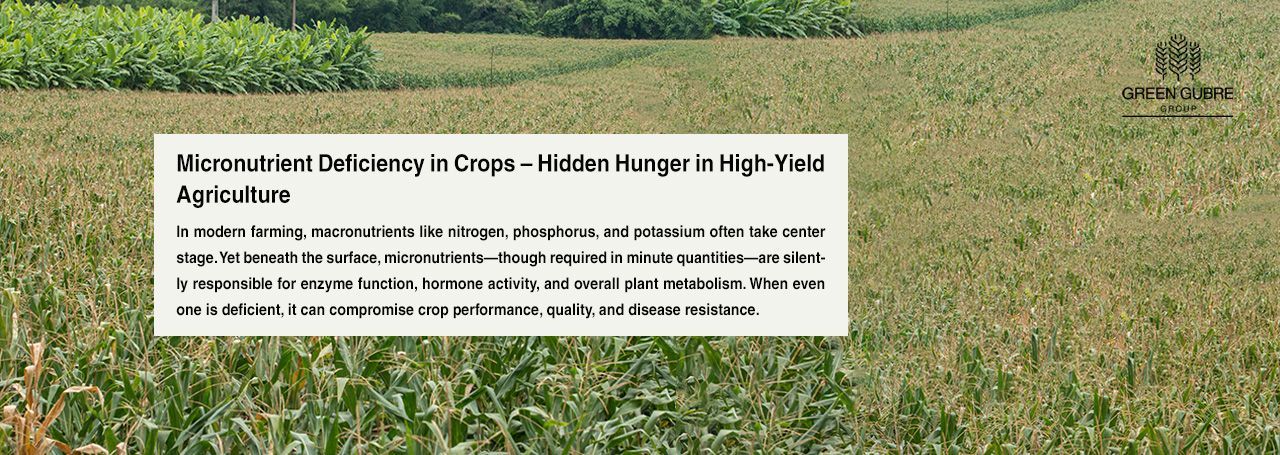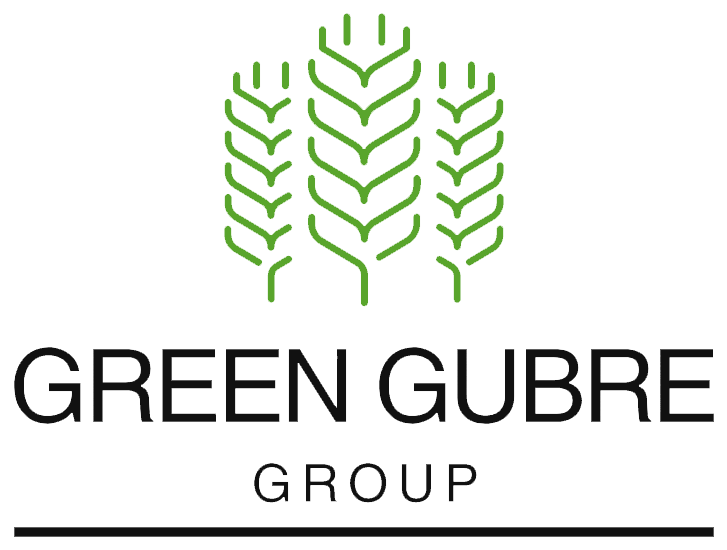Micronutrient Deficiency in Crops – Hidden Hunger in High-Yield Agriculture
Micronutrient Deficiency in Crops – Hidden Hunger in High-Yield Agriculture

Introduction: The Yield-Limiting Factors You Can’t See
In modern farming, macronutrients like nitrogen, phosphorus, and potassium often take center stage. Yet beneath the surface, micronutrients—though required in minute quantities—are silently responsible for enzyme function, hormone activity, and overall plant metabolism. When even one is deficient, it can compromise crop performance, quality, and disease resistance.
This phenomenon, often referred to as “hidden hunger,” affects both plant health and the nutritional value of the food we eat. With intensive cropping, depleted soils, and limited organic matter, micronutrient deficiencies are rising—even in fields that receive standard NPK fertilization.
What Are Micronutrients and Why Do They Matter?
Micronutrients are essential plant elements needed in small quantities (parts per million), yet they play outsized roles in growth and productivity. Key plant micronutrients include:
- Zinc (Zn) – Vital for enzyme activity, protein synthesis, and seed development
- Iron (Fe) – Crucial for chlorophyll formation and photosynthesis
- Manganese (Mn) – Helps with nitrogen metabolism and disease resistance
- Copper (Cu) – Important for lignin synthesis and reproductive growth
- Boron (B) – Aids in cell wall development and pollination
- Molybdenum (Mo) – Required for nitrogen fixation in legumes
- Chlorine (Cl) – Regulates water movement and disease control
Despite their low requirement, a shortage of any of these can impair crop development.
Symptoms of Micronutrient Deficiency
| Micronutrient | Common Deficiency Symptoms |
|---|---|
| Zinc (Zn) | Stunted growth, interveinal chlorosis in younger leaves |
| Iron (Fe) | Yellowing of young leaves with green veins (interveinal chlorosis) |
| Boron (B) | Brittle leaves, hollow stems, poor fruit, or seed set |
| Manganese (Mn) | Pale leaves with brown specks, poor flowering |
| Copper (Cu) | Leaf curling, dieback of tips, poor grain fill |
| Molybdenum (Mo) | Yellowing in older leaves, nitrogen deficiency symptoms in legumes |
| Chlorine (Cl) | Wilting, bronzing of leaves, and reduced root growth |
Visual symptoms vary by crop and soil type, but even mild deficiencies can reduce yield by 10–30%.
Why Are Micronutrient Deficiencies Increasing?
Several modern agricultural practices are intensifying micronutrient imbalances:
- High-yield varieties remove more nutrients from the soil
- Monoculture and lack of rotation deplete specific elements.
- Overuse of macronutrients (especially NPK) dilutes micronutrient uptake.
- Soil pH imbalances affect nutrient availability (e.g., Fe is locked in high pH soils)
- Sandy and eroded soils lack the capacity to retain trace elements.
These factors make regular soil testing and customized fertilizer programs more critical than ever.
Best Solutions for Correcting Deficiencies
Micronutrient deficiencies can be corrected through various means:
- Chelated Micronutrient Fertilizers – Enhanced solubility and uptake in foliar or drip systems (e.g., Fe-EDDHA, Zn-EDTA)
- Micronutrient-Enriched NPK Blends – One-step solutions for balanced fertilization
- Foliar Sprays – Quick correction during critical growth stages (flowering, fruit set)
- Soil Application of Granular Forms – For long-term correction in deficient zones
- Seed Coating or Dipping – For Zn, Mo, and B, especially in pulses and cereals
Precision timing and dosage matter—over-application can be toxic.
Source – Fertilizer Focus Magazine – Trace Element Nutrition
Micronutrient-Sensitive Crops
Some crops are more prone to micronutrient deficiency and show a strong yield response to correction:
- Rice, wheat, maize – Zinc and iron
- Soybeans, beans, legumes – Molybdenum, boron
- Cotton, sugarcane – Manganese, copper
- Fruits and vegetables – Boron, iron, zinc
- Citrus and grapes – Iron and zinc, especially in calcareous soils
Green Gubre Group’s Micronutrient Solutions
We offer a complete line of high-efficiency micronutrient fertilizers tailored to both field and greenhouse crops:
- Chelated Micronutrient Blends (Zn, Fe, Mn, Cu, B, Mo, Cl)
- EDTA, EDDHA, and DTPA Chelates for different soil pH conditions
- Custom NPK + Micronutrient Blends based on regional soil test data
- Foliar-Grade Powders and Liquids for rapid uptake and correction
We also provide soil and tissue testing, compatibility guidance, and fertigation support to ensure maximum uptake and ROI.
Conclusion: Don’t Let Hidden Hunger Steal Your Harvest
Micronutrients may be small in quantity, but their impact on crop yield and quality is massive. Ignoring them invites hidden losses, poor shelf life, and weaker plant immunity. Innovative farmers know that feeding plants right means feeding them entirely—and that starts by addressing even the most minor gaps.
Let Green Gubre Group help you eliminate hidden hunger from your fields, one nutrient at a time.




